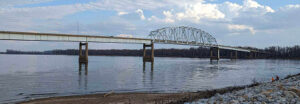After a disaster, communities and individuals can be overwhelmed by the amount of information available for recovery. As people worry about immediate needs like food, water, and power, they must also navigate a complex web of federal, state, local, and private resources, most of which involve applications and paperwork.
This page is for local leaders to share with individuals recovering from a recent disaster; we hope it simplifies the process for those seeking support.
The federal government’s role in a disaster
Disaster recovery is spread across local, state, and federal governments. One of the most visible federal agencies during a recovery is the Federal Emergency Management Agency (FEMA). After a federal disaster declaration, FEMA is invited to coordinate the federal government’s disaster response and recovery, in consultation with state and local governments, and offers financial support to individuals and households recovering from a disaster.
Assistance
If the president declares a disaster, the federal government can distribute the following forms of financial assistance to individuals in a disaster zone:
Serious Needs Assistance
Serious Needs Assistance is an upfront, flexible payment to help cover essential items like food, water, baby formula, breastfeeding supplies, medication, and other emergency supplies. The maximum for Serious Needs Assistance is $770. Note: This is an initial payment. As FEMA reviews applications, people may still receive more assistance for other needs like temporary housing, personal property, and home repair costs.
FEMA Individual Assistance
Individuals and Households Program (IHP) provides financial and direct services, such as temporary housing or home repairs, to individuals and households who have uninsured or under-insured expenses and needs. IHP assistance is not a substitute for insurance and is only intended to meet basic needs. The maximum payout for IHP is $36,000.
Note: If individuals disagree with FEMA’s decision, they can appeal. The appeal must be submitted within 60 days of the date of the decision letter.
SBA disaster loans
The Small Business Administration (SBA) offers low-interest disaster loans to homeowners, renters, businesses, and private nonprofits in a declared major disaster area. Loans are for losses not covered by either insurance or funding from FEMA, including for personal losses and for business operating expenses that could have been met had the disaster not occurred. Loan recipients must be located in a declared disaster area and meet other criteria depending on the type of the loan.
Flood insurance
Flood insurance is one of the only ways to financially protect property and belongings when flooding strikes. Standard homeowner or renters insurance policies do not cover flood damage, so individuals must purchase a separate policy, often through the National Flood Insurance Program (NFIP).
NFIP policies provide flood insurance to property homeowners, renters, and businesses. Policies cover up to $350,000 for a building and its contents, or up to $100,000 in belongings for renters. Though NFIP is managed by FEMA, policies are largely sold and serviced by private insurance companies.
—
As storms become stronger and flooding more frequent, AFC is here to support communities. If these resources would help others, please share this page.
—
Photo at top: Volunteers unload donations for residents in the aftermath of Hurricane Helene in Old Fort, North Carolina. Credit: Melissa Sue Gerrits/Getty Images.




